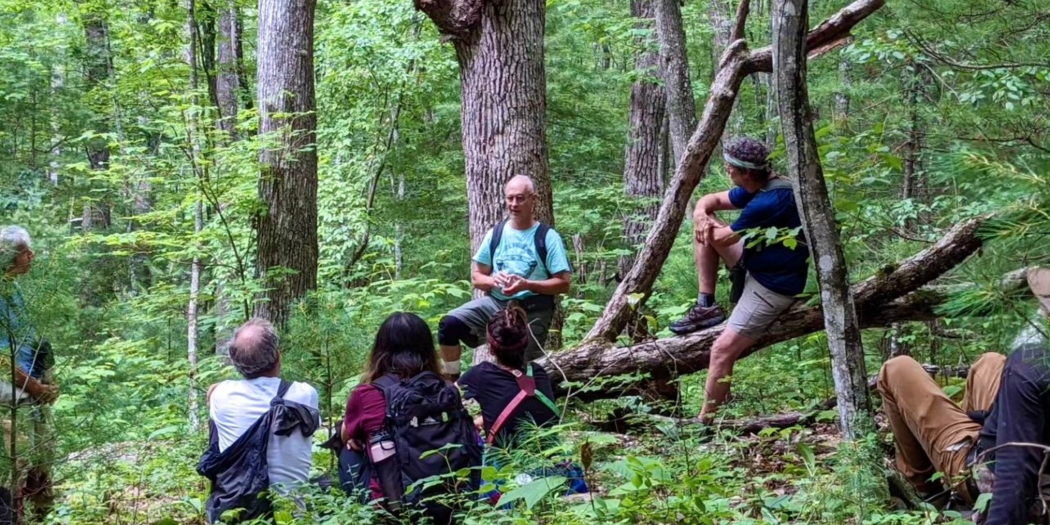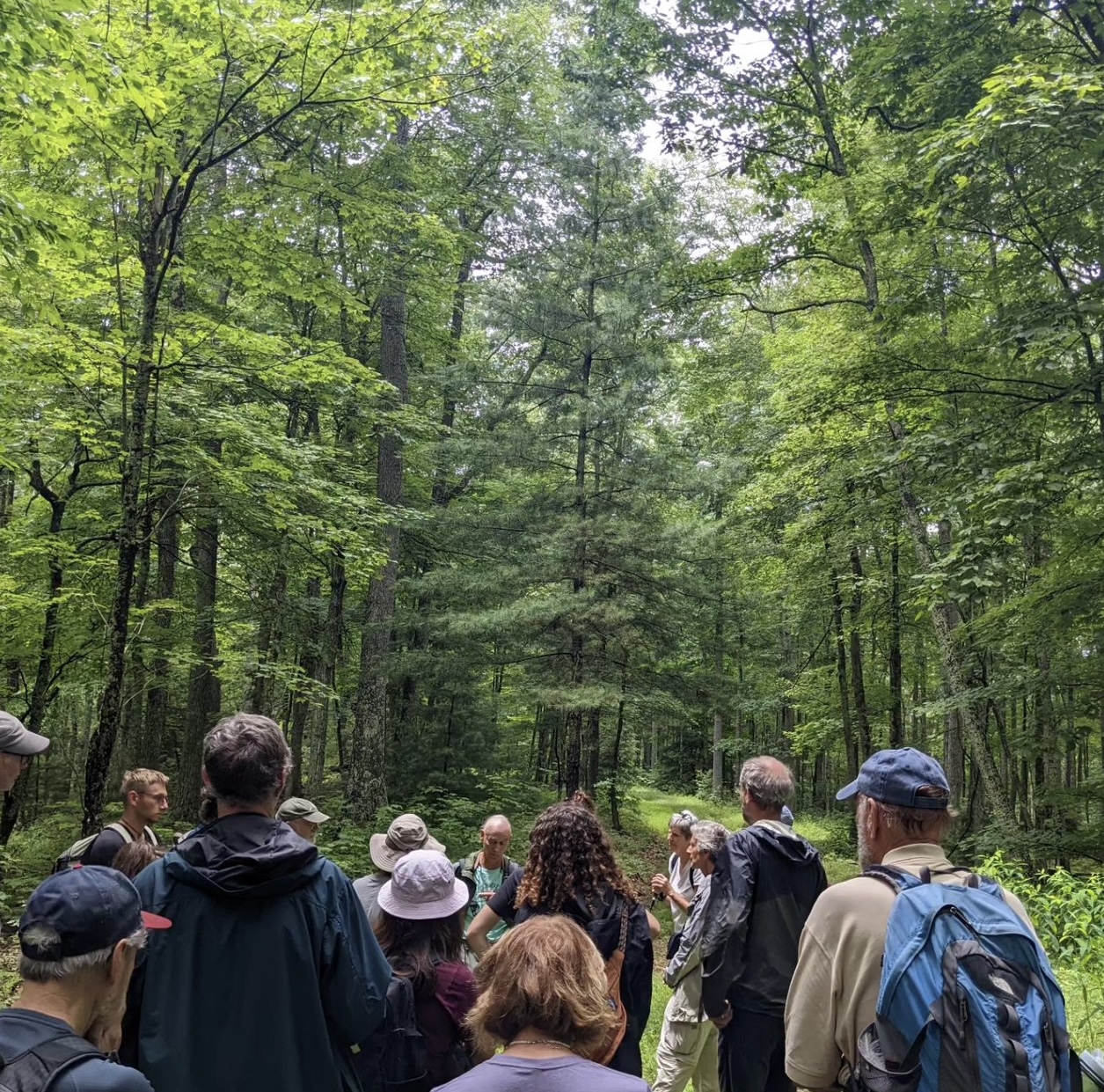By Larry Thomas
The Conservancy’s second old-growth outing took place on July 9, when more than thirty individuals met ecologist/naturalist Doug Wood at Watoga State Park’s Ann Bailey Overlook Trailhead. Although we weren’t sure the weather would cooperate, the outing turned out to be another wonderful opportunity to learn and experience “up close and in-person” old-growth trees in several hollows within the park boundaries.
Doug explained the events of the day along with a narrative of how the stand of old-growth trees had survived the efforts of three different logging companies who logged the area. A mistake on the loggers’ part has left the trees standing in the forest, which everyone can now experience.
Doug first explained the characteristics we should look for when trying to find old-growth forests. Doug’s long list includes:
(1) scattered, dominant canopy trees greater than 20 inches diameter-at-breast-height, known as dbh (>120-150 years old),
(2) dominant canopy trees have “stag-headed” crowns with large horizontal or near horizontal branches (> 45-degree angle from the main trunk),
(3) canopy, sub-canopy, understory trees, and shrubs of varying sizes, reflecting multiple ages,
(4) multiple canopy tree species, but very few shade-intolerant tree species, except in canopy gaps,
(5) large logs on the forest floor,
(6) scattered, large dying trees and standing dead snags,
(7) usually, small canopy gaps created by standing dead and fallen trees as well as other natural phenomena, like insect infestation, soil slips, and windfall,
(8) few, if any, cut stumps (rotting or otherwise) can be seen,
(9) few, if any, visible signs of old logging roads or skid trails,
(10) 100% ground cover by leaf litter, except on large rock faces, and except soon after a fire,
(11) the presence of wildlife species that are mature-forest specialists
Knowing the distant-past disturbance history of an old-growth forested watershed that currently provides high-quality water and aquatic habitat is unnecessary. So long as the eleven old-growth characteristics typify the watershed, and so long as the forested watershed provides the typical ecosystem services and ecological functions of old-growth, then the category of old-growth is not so important. To further determine if an identified old-growth tract has never been cut, not even selectively in the distant past, Doug recommended researching courthouse deeds, interviewing old-timers, and looking for the following characteristics:
(12) no CUT stumps (rotting or otherwise) are visible,
(13) rotting stumps that appear to have been uncut have an associated uncut rotting log next to them (remnants of the naturally fallen tree),
(14) no visible signs of old logging roads or skid trails.
We then hiked about a mile and a half to the head of the hollow, where we would find the old-growth trees that had been missed by the loggers so long ago. Along the way, Doug continuously pointed out many interesting facts about things we found along the trail. Of particular interest during the hike were trees that had contracted what is commonly known as the Oak Wilt fungus. This was pointed out to us by the fallen diseased leaves around and close to the affected trees. Bretziella fagacearum is the new name for the Oak Wilt fungus https://mycokeys.pensoft.net/article/20657/. Oak Wilt fungus is another invasive alien species considered one of several significant diseases that threaten the health of forests worldwide. On a positive note, Doug also pointed out many other interesting finds along the trail as we proceeded to our destination. His vast knowledge of our natural world is amazing. As we approached the area, the old-growth trees were quickly evident.
We were immediately able to identify trees that appeared as old growth. We stopped at each tree, and Doug pointed out the species of each tree and performed the measurements and observed other characteristics which confirmed that the tree qualified as old growth. We found trees that measured up to 48 inches in diameter at breast height. They were certainly giants.
During our exploration for more big trees to examine, we got a big surprise when Doug shouted Rattlesnake. Sure enough, there lying behind a log was a Rattlesnake. I wondered what the snake thought as everyone crowded around to look and take photos.
Doug also pointed out the importance of high-quality soil in carbon sequestration. Soil Carbon Sequestration | Regenerative Energy
We then found a fallen giant Oak, and Doug pointed out that it was very important to leave it where it fell as it was still storing carbon. That tree measured 41 inches at the point we determined was breast height. Some of us thought it was much bigger until the tape confirmed the measurement. It just looked so huge lying there.
Participants certainly learned the importance and benefits of our forests and the soils in carbon sequestration as we work hard to mitigate climate change.
WVHC thanks Doug and everyone who made this outing a huge success as we endeavor to provide meaningful outings for our members, supporters and the public.


